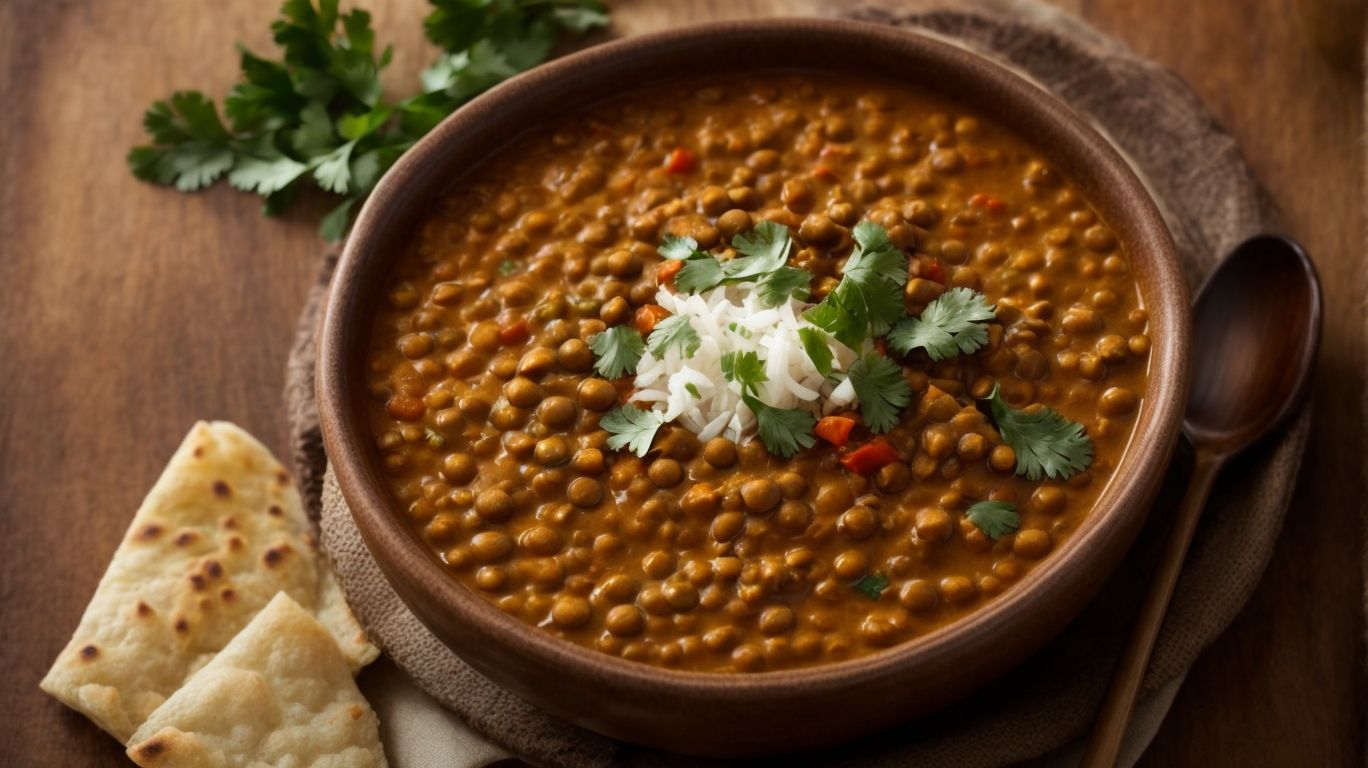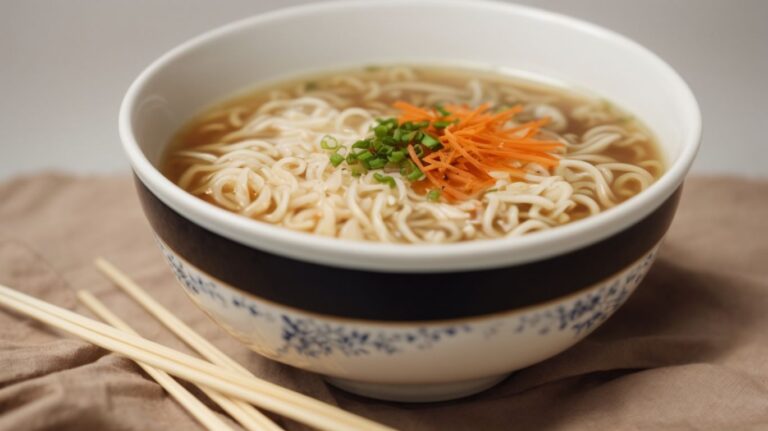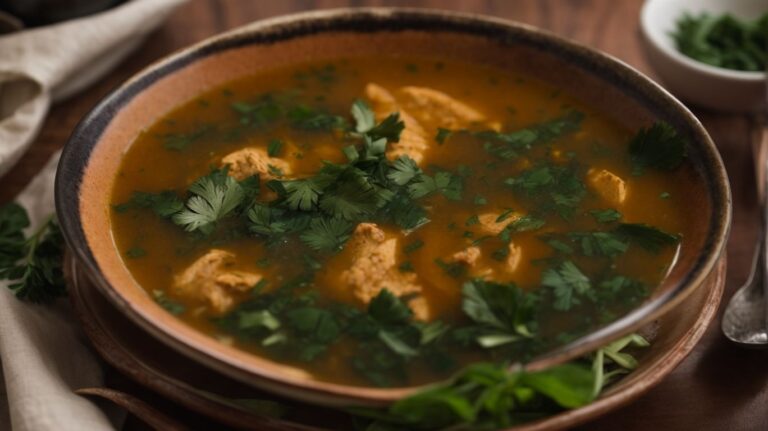How to Cook Lentils Into a Curry?
Looking to add a healthy and delicious dish to your recipe repertoire?
Lentils are a versatile and nutritious ingredient that can be transformed into a flavorful curry.
In this article, we will explore the different types of lentils, the health benefits they offer, the essential ingredients needed for a tasty lentil curry, and step-by-step instructions on how to cook them into a mouthwatering dish.
Stay tuned for tips, tricks, and common mistakes to avoid when preparing lentil curry. Let’s get cooking!
Key Takeaways:
What Are Lentils?
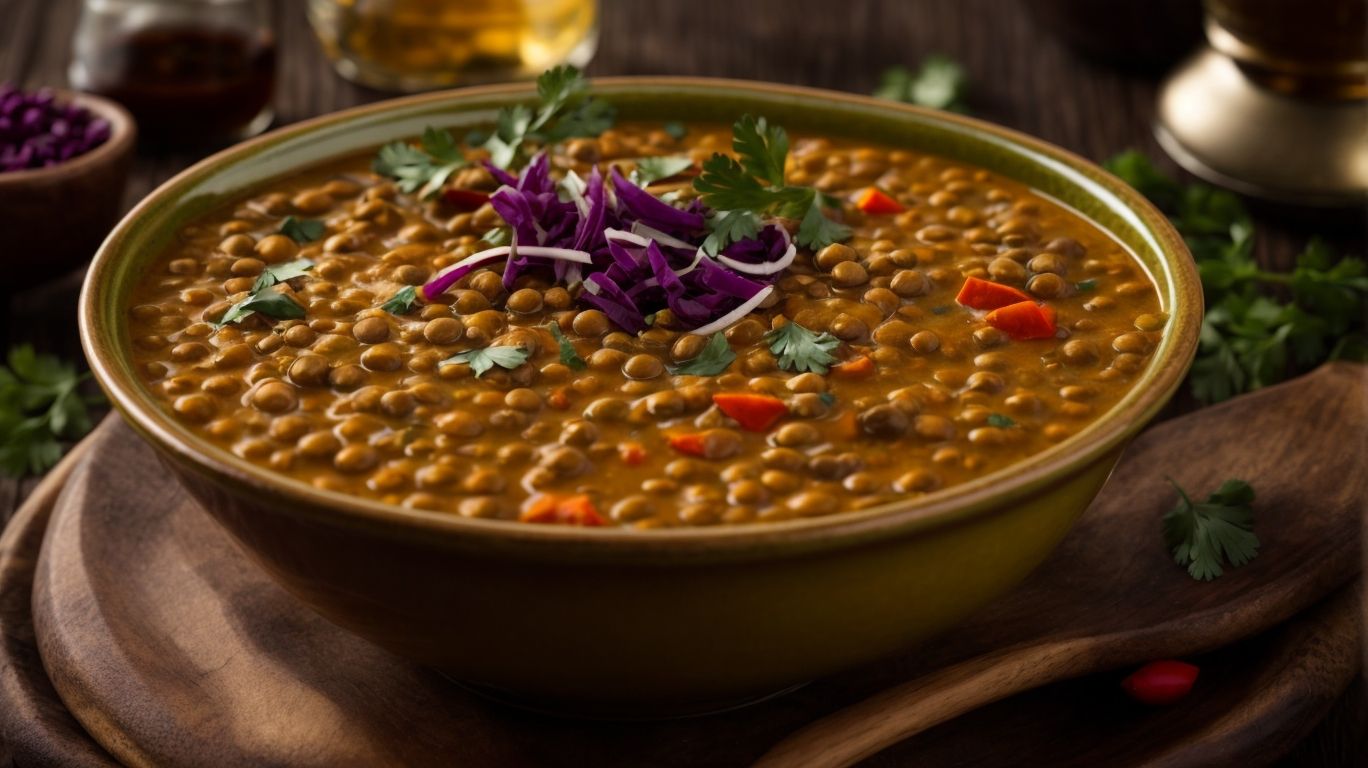
Credits: Poormet.Com – Joseph Robinson
Lentils are edible pulses or seeds that belong to the legume family and are packed with essential nutrients such as protein, fiber, and minerals.
There are various types of lentils, each with its own unique flavor and texture.
- Red lentils cook faster and tend to break down, making them perfect for soups, stews, and curries.
- Green lentils hold their shape well, making them ideal for salads and side dishes.
- Brown lentils have a slightly earthy flavor and are versatile for a wide range of recipes.
Types of Lentils
Lentils come in various types including brown, green, red, and yellow, each differing in taste, texture, and cooking properties.
Brown Lentils
Brown lentils are versatile legumes with a mild earthy flavor and a firm texture, making them suitable for salads, soups, and stews.
Brown lentils, commonly used in various cuisines around the world, are renowned for their nutritional richness and incredible health benefits. These legumes are packed with protein, fiber, iron, and folate, making them a great addition to a balanced diet. When cooked, brown lentils hold their shape well, adding a hearty and substantial element to dishes. They pair beautifully with a wide range of seasonings and spices, enhancing their earthy undertones with depth and complexity. The classic combination of garlic, onion, and cumin, known as the aromatic trio, brings out the best in brown lentils, whether used in a comforting stew or a flavorful lentil curry.
Green Lentils
Green lentils are robust and peppery in flavor, retaining their shape well when cooked, making them ideal for salads, pilafs, and side dishes.
What sets green lentils apart is their versatility in absorbing flavors, particularly when cooked with coconut milk and a blend of aromatic spices. With their earthy taste, they complement various dishes, from hearty soups to creamy curries. These legumes also play a prominent role in Indian cuisine, adding depth and texture to classic dal recipes. Whether simmered with cumin and coriander or roasted with garlic and turmeric, green lentils showcase their adaptability in a myriad of culinary creations.
Red Lentils
Red lentils, also known as masoor dal, have a sweet and nutty flavor, cook quickly, and turn golden when cooked, perfect for soups, curries, and dals.
These lentils are commonly used in Indian cuisine to prepare lentil curry, where their creamy texture adds richness to the dish. They pair well with aromatic spices like turmeric and cumin, creating a harmonious blend of flavors. Red lentils can also be cooked with coconut milk to make a creamy and satisfying dhal. Due to their rapid cooking time, they are ideal for busy weeknight dinners, allowing you to enjoy a nutritious meal without spending hours in the kitchen.
Yellow Lentils
Yellow lentils, also known as toor dal or split pigeon peas, have a buttery texture and a mild flavor, commonly used in Indian cooking for dals, soups, and stews.
These lentils are a staple ingredient in many households across India, where they provide a rich source of protein and fiber. Besides their versatile nature, yellow lentils are easy to cook and quick to prepare, making them a convenient option for busy weeknight dinners. They pair exceptionally well with curry powder and coconut milk, adding depth to dishes with a hint of creaminess.
Health Benefits of Lentils
Lentils offer a myriad of health benefits, such as being rich in protein, fiber, vitamins, and minerals, promoting heart health, aiding digestion, and supporting weight management.
One of the remarkable nutritional advantages of incorporating lentils into your diet is their positive impact on cardiovascular health. Lentils contain high levels of antioxidants that help in reducing inflammation and lowering the risk of heart diseases. The fiber content in lentils aids in lowering cholesterol levels and maintaining blood pressure, which are crucial factors in preserving heart health.
Ingredients for Lentil Curry
Creating a flavorful lentil curry requires an assortment of ingredients including lentils, aromatic spices like garlic, ginger, and onion, and creamy coconut milk to enhance the dish’s richness.
To begin, choosing the right type of lentils is crucial. While red lentils are popular for their quick cooking time, green or brown lentils offer a firmer texture that holds up well in rich curries. The harmonious blend of spices like cumin, coriander, turmeric, and garam masala infuses depth and warmth to the curry, tantalizing the taste buds with layers of flavor. Coconut milk plays a dual role, providing a velvety texture while balancing the boldness of the spices.
Lentils
Lentils, particularly red lentils, serve as the core ingredient in lentil curry, contributing a creamy texture, plant-based protein, and a wealth of nutrients to the dish.
Red lentils, in particular, are prized for their ability to break down easily during cooking, lending a velvety consistency to the curry. Their neutral flavor profile allows them to absorb spices and seasonings beautifully, resulting in a rich and flavorful dish. Red lentils are a powerhouse of nutrition, packed with protein, fiber, iron, and folate, making them a wholesome choice for vegetarians and vegans.
Vegetables
Incorporating vegetables like onion, garlic, and ginger into the lentil curry adds depth of flavor, aroma, and nutritional value, enhancing the overall taste profile of the dish.
Onions are commonly used in the base of the curry, providing a sweet and savory undertone to the dish. The aromatic garlic infuses a rich flavor, while ginger adds a subtle spice and warmth, balancing the overall taste. Together, these ingredients create a harmonious blend of flavors that complement the earthy lentils perfectly. Not only do these vegetables contribute to the taste, but they also offer numerous health benefits, packed with essential vitamins, minerals, and antioxidants.
Spices
A blend of aromatic spices like turmeric, coriander, and cumin infuses lentil curry with a medley of flavors, creating a harmonious and appetizing dish.
The incorporation of these spices not only enriches the curry with a vibrant yellow hue from turmeric but also brings in earthy and citrusy notes from coriander and cumin respectively. Turmeric, often referred to as the ‘golden spice’, adds warm and peppery undertones while offering anti-inflammatory properties.
Coriander introduces a fresh, floral essence, balancing the overall flavor profile of the dish, while cumin provides a nutty aroma and aids in digestion. These spices not only enhance the taste but also offer various health benefits, making the lentil curry a nutritious and wholesome meal.
How to Cook Lentils Into a Curry?
Transforming lentils into a delectable curry involves a cooking process that includes sautéing onions, simmering lentils in coconut milk, and infusing aromatic spices to create a flavorful dish.
To begin, start by rinsing the lentils thoroughly and soaking them for about 30 minutes to reduce their cooking time and enhance their texture.
- In a large pot, heat oil over medium heat and add finely chopped onions.
- Sauté the onions until they turn translucent and aromatic.
After the onions are cooked, add the soaked lentils along with coconut milk to the pot. Stir the mixture well and allow it to simmer gently until the lentils are tender and the flavors combine beautifully.
Now comes the exciting part – adding the key spices to elevate the curry’s taste. Common choices include cumin, coriander, turmeric, and garam masala. Sprinkle these spices into the curry and let them meld together with the lentils, creating a rich and fragrant aroma.
Preparation
The preparation phase for lentil curry involves rinsing and soaking lentils, chopping vegetables, and assembling the necessary spices and coconut milk for cooking.
Before starting to cook the lentil curry, it’s crucial to thoroughly rinse the lentils to remove any dirt or debris. Once rinsed, the lentils should be soaked in water for around 30 minutes to ensure they cook evenly and become tender.
Next, prepare the vegetables by washing, peeling, and chopping them into uniform pieces. This can include onions, tomatoes, garlic, and any other vegetables you wish to add.
After the vegetables are ready, it’s time to blend the spices. Spice blending plays a vital role in creating the rich flavor profile of the curry. Common spices for lentil curry include cumin, coriander, turmeric, and red chili powder.
Cooking Process
The cooking process for lentil curry entails sautéing onions, adding lentils and spices, simmering the mixture in coconut milk, and adjusting the seasonings to achieve the desired flavor profile.
Next, it is crucial to give the lentils enough time to cook and soften, absorbing all the delicious flavors from the spices and coconut milk. Stirring occasionally prevents sticking and ensures even cooking. To ensure optimal spice infusion, consider blooming whole spices like cumin seeds and mustard seeds in oil before adding other ingredients for a rich aromatic base.
- After the lentils are well-cooked and the curry has reached its desired consistency, a final touch of freshness can be added by squeezing some lemon juice and garnishing with fresh cilantro.
- For those who prefer a spicier kick, adding a sprinkle of red chili flakes or a dash of hot sauce can elevate the flavor profile to suit individual preferences.
Serving Suggestions
Lentil curry pairs well with aromatic basmati rice, warm flatbreads, or naan, offering a complete and satisfying meal rich in Indian flavors and textures.
For a balanced and delightful dining experience, consider serving the lentil curry with fluffy basmati rice lightly flavored with fragrant spices like cardamom, cloves, and cinnamon. The soft and slightly charred edges of freshly made flatbreads provide a pleasant contrast to the creamy lentils. If you prefer something softer, opt for warm, pillowy naan bread, perfect for soaking up the flavorful curry sauce. A refreshing side of cucumber yogurt raita or tangy mango chutney can add a cooling element to balance the warmth of the spices in the curry.
Tips and Tricks for Cooking Lentil Curry
Elevate your lentil curry preparation with expert tips and tricks including proper lentil cooking times, spice balancing techniques, and flavor-enhancing methods for a delicious and aromatic dish.
One crucial aspect of perfecting the lentil curry is mastering the art of seasoning. Understanding how different spices interact and complement each other can take your dish to the next level. As you cook, consider layering the spices to build complexity in flavors. Incorporating fresh herbs like cilantro or mint towards the end of cooking can add a burst of freshness.
Experimenting with various types of lentils, such as red lentils for a smoother texture or black lentils for added depth, can offer unique twists to your traditional recipe. To add a creamy richness, try blending a portion of the cooked lentils and stirring them back into the curry.
For a hint of sweetness, consider tossing in a handful of raisins or a splash of coconut milk. These unexpected additions can surprise your taste buds in the best way possible, turning a simple lentil curry into a gourmet delight.
Common Mistakes to Avoid
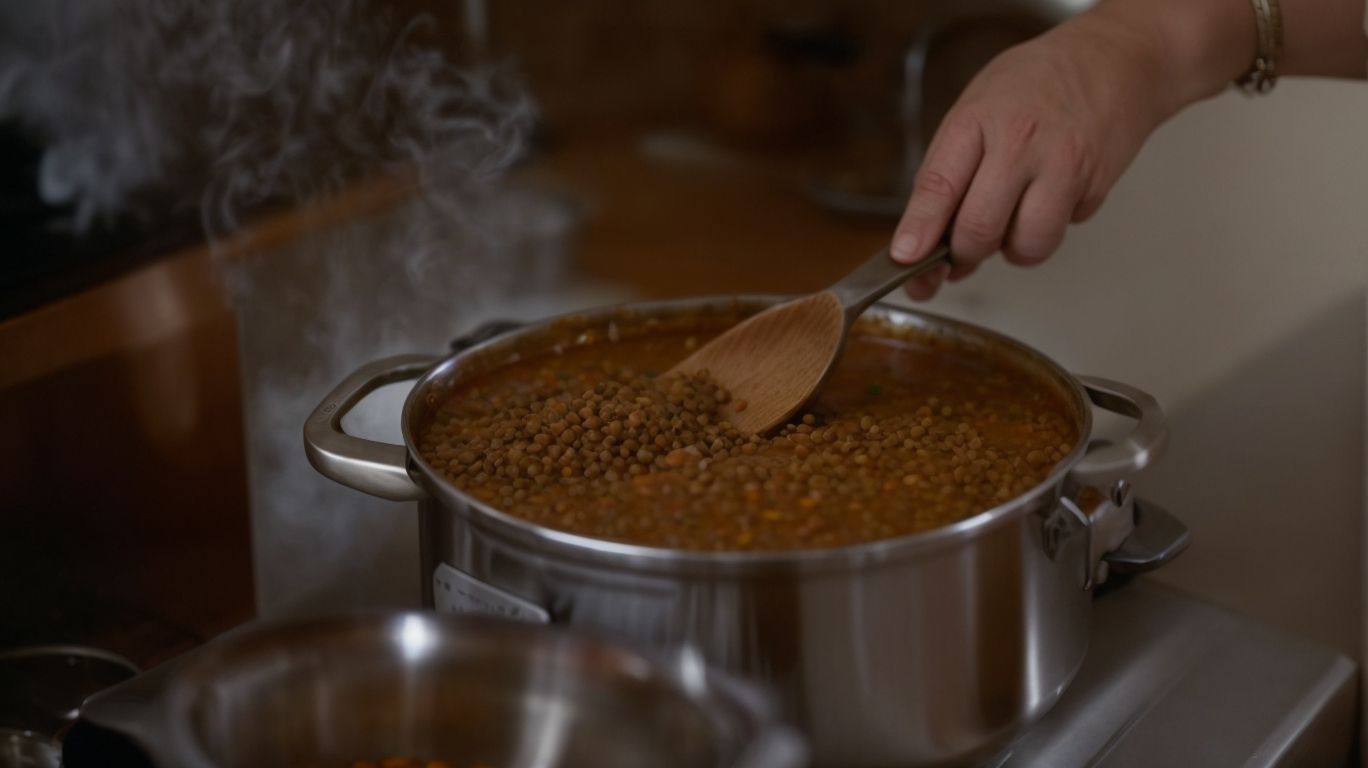
Credits: Poormet.Com – Peter Campbell
Steer clear of common errors in lentil curry preparation by avoiding overcooking lentils, underseasoning the dish, or neglecting the proper balance of spices for a subpar culinary experience.
Properly rinsing lentils before cooking can help remove excess starch, preventing a mushy texture when they are cooked. It’s also crucial to use the right amount of water to cook the lentils, ensuring they are tender yet retain their shape.
Additionally, tempering your spices in oil before adding them to the curry can enhance their flavors and aromas, elevating the overall taste of the dish. Make sure to taste and adjust the seasoning as needed, as this simple step can make a significant difference in the final outcome of your lentil curry.
Conclusion
Mastering the art of preparing lentil curry unlocks a world of flavors, textures, and culinary delights that showcase the richness and versatility of lentils combined with aromatic spices and creamy coconut milk.
One of the key aspects of preparing lentil curry is the balance of flavors – the earthy notes of lentils complementing the boldness of spices like cumin, coriander, and turmeric. The creamy coconut milk adds a luxurious touch, enhancing the overall richness of the dish.
The varying textures within the curry create a harmonious sensory experience – from the softness of cooked lentils to the slight crunch of sautéed onions and peppers. This play of textures adds depth and dimension to each bite.
Additionally, lentil curry is a highly nutritious dish, packed with plant-based protein, fiber, vitamins, and minerals. The diverse range of lentils, from green to red to black, offers an array of health benefits, promoting heart health, aiding digestion, and boosting energy levels.
Frequently Asked Questions
1. How do I choose the right type of lentils for a curry?
When making lentil curry, it’s important to choose a lentil that holds its shape and texture well. Brown or green lentils are best for this, as they have a firmer texture compared to red or yellow lentils.
2. Do I need to soak lentils before cooking them into a curry?
Unlike other legumes, lentils do not require soaking before cooking. However, if you want to reduce the cooking time, you can soak them for 1-2 hours before use.
3. Can I use canned lentils instead of cooking them from scratch?
Canned lentils can be convenient, but for the best texture and flavor, it’s recommended to cook them from scratch. Canned lentils can become mushy and may not hold up well in a curry.
4. How do I prevent my lentil curry from becoming too watery?
To avoid a watery curry, make sure to drain and rinse the cooked lentils before adding them to the dish. You can also adjust the amount of liquid in the recipe by adding less broth or water.
5. How do I add more flavor to my lentil curry?
To enhance the flavor of your lentil curry, try adding spices like cumin, turmeric, and garam masala. You can also add aromatics like garlic, onions, and ginger for a flavorful base.
6. Can I freeze leftover lentil curry?
Yes, you can freeze leftover lentil curry for up to 3 months. Just make sure to cool it down completely before transferring it to an airtight container or freezer-safe bag. To reheat, thaw in the fridge overnight and warm it up on the stovetop or in the microwave.

